Measures to combat ticks on grapes: preparations for spider mites and felt mites (grape itch)
Have you noticed that there are blisters (blisters) on the leaves of your grapes, and a white coating on the back? Most likely, these are symptoms of infection of grapes by one nasty pest.
Just do not confuse with grape mildew (downy mildew) or phylloxera.
Next, you will learn how to deal with mites on grapes (especially grape itch), when and what drugs are best used for treatment.
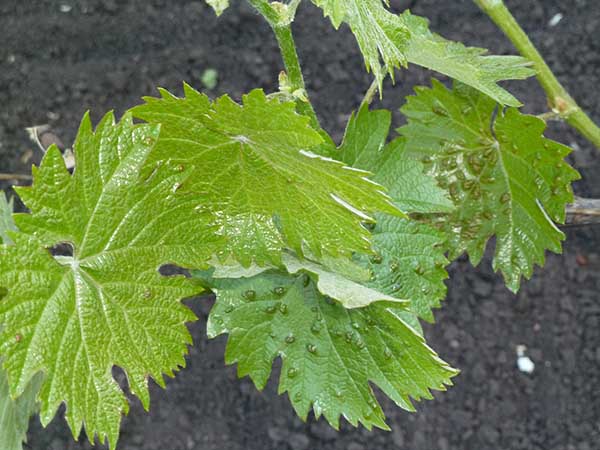
Content
Felt mite (grape itch): description of the pest, symptoms of damage and harmfulness
Grape itch (felt mite) is one of the most common pests on the vine.
Symptoms of damage to grapes with a felt mite (itching):
- The main sign by which it can be determined that the felt mite (itch) hit the grapes is formation of characteristic blistersblister-like (green or red in red varieties) on the front (top) side leaves.
Such swellings (neoplasms) on plants are usually called Gauls.
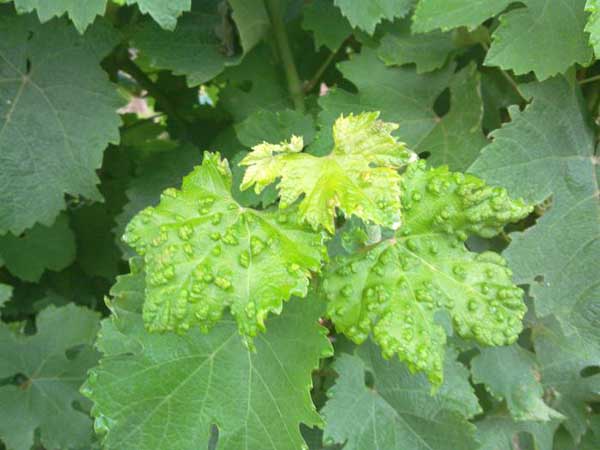
Important! Do not confuse with phylloxera!
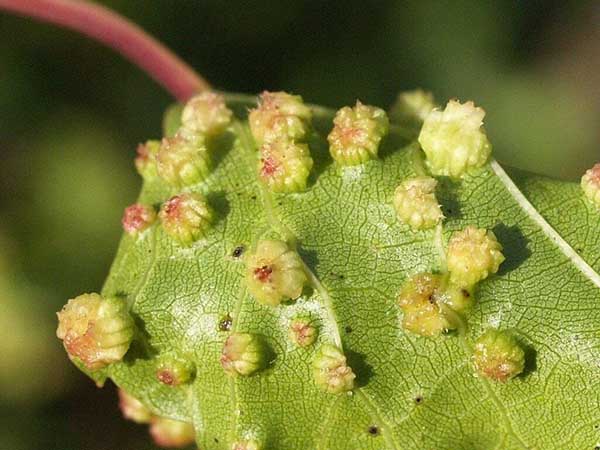
- Wherein on the back (bottom) side leaves appear first white felt bloom, which later acquires a yellow-brown color.
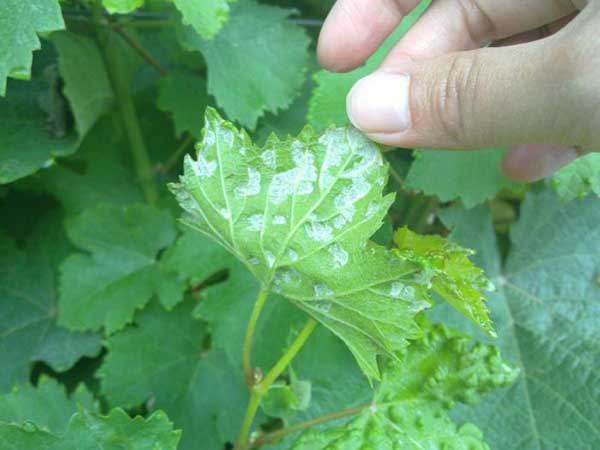
And yet confuse with a bloom from mildew (downy mildew) really you can.
If in doubt, you can try rubbing with your finger: mildew is easily erased, but felt plaque is not.
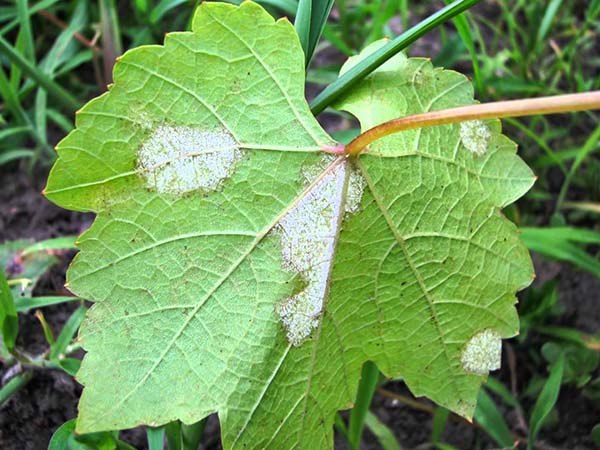
Thus, with a strong defeat, the felt mite causes a noticeable suppression of the bushes (leaves roll up and hang down). But still, the harm from it is small, especially with a small number.
In other words, in terms of harmfulness, the felt mite is not even close to such dangerous grape diseases as oidium and mildew, and gray rot.
Development cycle of grape felt mites (itch):
- Mites (adults) are activated at temperatures above +15 degrees, approximately simultaneously with the appearance of the first leaves on the grapes. Mating and egg-laying take place a little later.
- The egg develops inside the bulge. An adult tick (imago) appears 10-14 days after mating.
- In autumn, females hibernate, crawling inside the eyes (under the scales of the buds).
- In the spring the cycle is repeated.
On average, 7-8 generations of the pest develop per year.
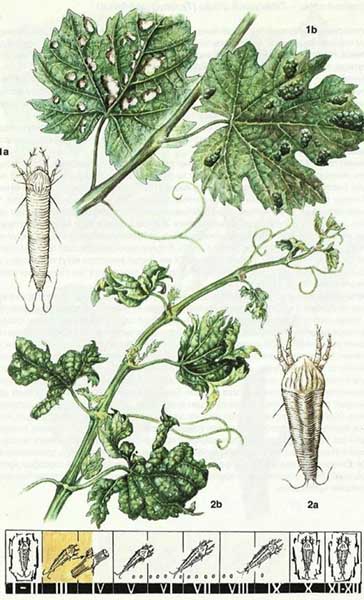
Grapes are also affected by other mites: common spider mites, as well as grape leaf and kidney (itching also belongs to them).
But more often than not, you can find in your vineyard precisely the symptoms of a felt mite (itch) infection.
In general, the measures to combat all types of ticks are the same.
How, when and how to treat grapes from ticks: a list of acaricidal preparations
Processing rules
- First, you need exactly acaricides (mite control agents), not just insecticides (insect pest control agents).
By the way! Most drugs are still insectoacaricidessince they work against other pests as well.
- Secondly, it is necessary to process the grapes from ticks very carefully, spraying the leaves on both (two) sides.
In this case, the main emphasis needs to be made on the back of the sheet (this is where the ticks hide).
- Thirdly, you must understand that it will not be possible to eradicate a tick with one treatmentsince most drugs work only against adults (adults), but eggs remain. Therefore, you will need to carry out at least 2, and preferably 3-4 treatments with an interval of 7-14 days.
We repeat! The remedies for combating grape itch (felt mite) are the same as for spider mites.
Processing time
As a rule, treatments begin to be carried out when the first signs of ticks appear on grapes, i.e. already during the growing season (although you can eradication spraying and before bud break).
- In no case do not try carry out processing during flowering!
- You should also pay attention for the waiting period (after what time can you eat berries).
Chemical insectoacaricides
For treatment against ticks on grapes, you can use various preparations of acaricidal action.
Perhaps the most popular acaricidal agent for tick control is the use of drugs based on colloidal sulfur:
- Tiovit Jet - contact fungicide and acaricide, against powdery mildew (powdery mildew) and ticks.
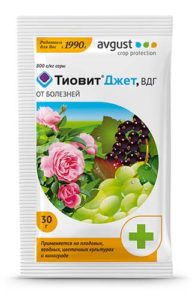
On sale you can find and simply colloidal sulfur (= Tiovit Jet).
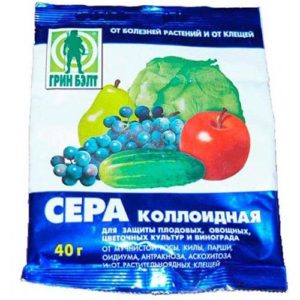
Note! It is useless to work with colloidal sulfur (Tiovit Jet) in cool weather (below +20): the optimum temperature is +25 degrees, then the sulfur will evaporate and have a detrimental effect on ticks.
However! At temperatures above +30 degrees, sulfur cannot be used, because the treatment may cause burns on the leaves.
Video: treatment of grapes from ticks with Tiovit Jet preparations (Colloidal sulfur)
And even before the beginning of the growing season (before bud break), during early spring eradication spraying, you can try treating the bare vine with preparations based on vaseline oilthat work against the hibernating stages of pests:
- Preparation 30 plus (Vaseline oil, contact insect-acaricide from wintering stages of pests);
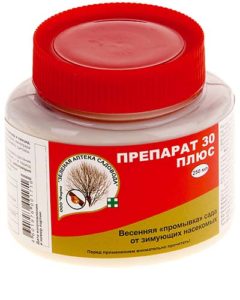
- Prophylactin (Vaseline oil and Malathion (karbofos), enteric insectoacaricide from wintering stages of pests).
Note! It is recommended to treat with prophylaxis on already swelling kidneys.
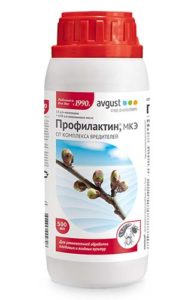
And during the growing season, the following acaricidal preparations are usually used:
- Fufanon-Nova (Malathion (Karbofos), enteric insectoacaricide);
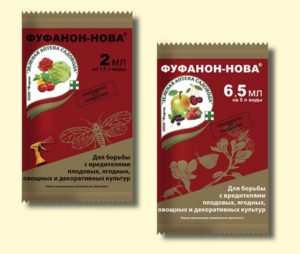
- Karate Zeon (Lambda Cyhalothrin, enteric insectoacaricide);
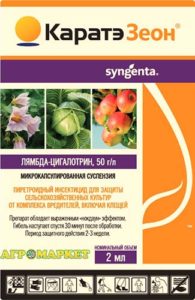
- Vertimek (Abamectin, insectoacaricide of intestinal action).
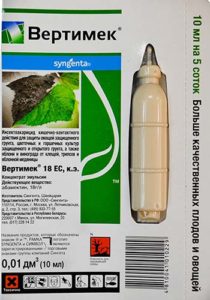
- Masai (Tebufenpirad, acaricide of intestinal action);
Has a strong ovicidal action against oviposition.
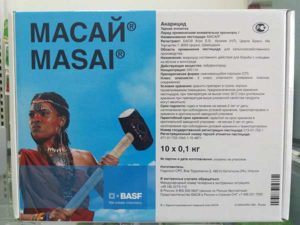
- Apollo (Clofentesin, contact acaricide ovicidal (against oviposition);
- Bi-58 (Dimethoate, systemic insectoacaricide of intestinal action).
Biological insectoacaricides
- Fitoverm (Aversectin C, enteric insectoacaricide);
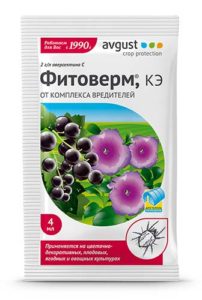
Fitoverm, Aktofit and Kleschevit Are full analogs.
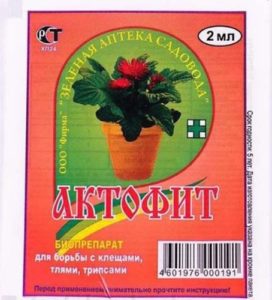
- Gaupsin (two strains of soil bacteria Pseudomonas aureofaciens, insectofungicide complex action).
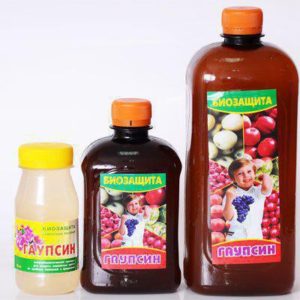
By the way! It is believed that the infusion onion peel able to scare away ticks.
The answer to the most popular question: is it possible to pick off the affected leaves
Obviously, the loss of leaves weakens the bush, in other words, cutting off most of the leaves you simply deprive the plant of nutrition. Therefore, at the early stage of the growing season (when there are few leaves), this is out of the question.
Respectively, you can pick off the leaves only in case of a weak lesionwhen there are only a few such leaves (with swellings), and most are healthy.
If the lesion is strong, especially the leaves are still few, then only spraying with acaricidal agents will help you.
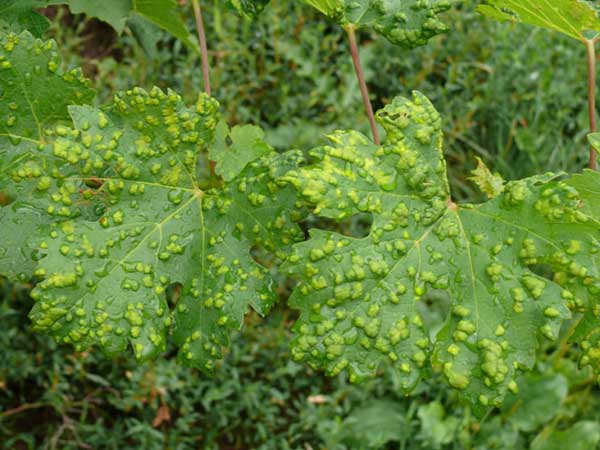
Well, now you know what drugs to use to treat grapes from ticks. We hope that from now on your grapes will be less affected by pests and sick.
Video: grape felt mite (itch)

